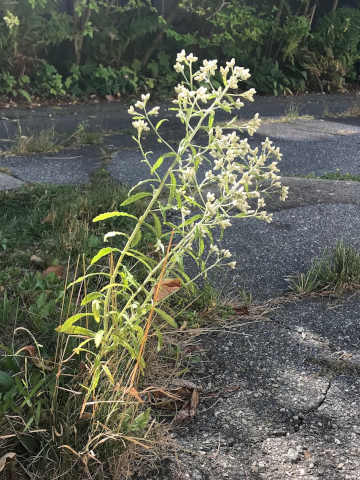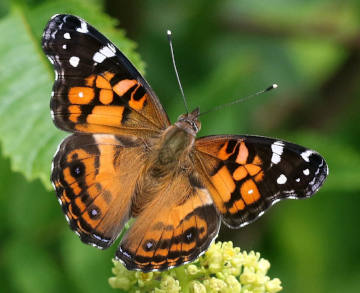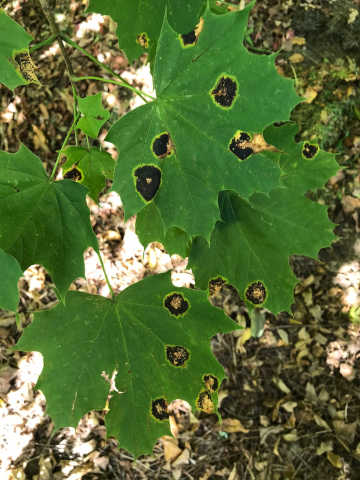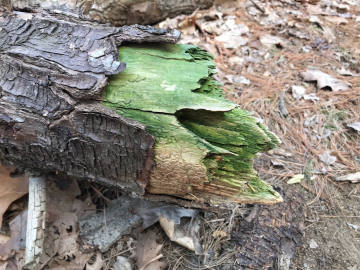Nature Notes

Sweet everlasting gives off a mild aroma of maple syrup when its leaves or flowerheads are crushed.
Oct 3, 2025
NATURE NOTES
By Annie Reid
Westborough Community Land Trust
Fall Curiosities
October brings crisp mornings and fall foliage, but also curiosities that can be fun to find in our local natural environment. Look for a white wildflower that smells like maple syrup, tar-like spots on maple leaves, and bright green bare logs.
First, the wildflower. Maybe you already noticed sweet everlasting (Pseudognaphalium obtusifolium) in late summer and thought, what’s that white plant? It looks showy with small, bud-like or tube-like white flowerheads sticking up amid the greens and tans of a field or roadside. Sweet everlasting is a native green plant, in the aster or daisy family (Asteraceae), but its white, papery flowerheads last a long time as they slowly dry out. They give the plant its “everlasting” name. Why is the plant called “sweet”? To find out, crush some leaves or flowerheads with your fingers and catch a whiff of a faint, sweet scent that reminds you of maple syrup.

PHOTO COURTESY OF GARRY KESSLER
The American Lady butterfly lays its eggs on sweet everlasting.
Why on earth would a wildflower smell like maple syrup? Think like a pollinator: the scent probably attracts insects searching for nectar or pollen. Bees, wasps, and flies pollinate sweet everlasting. Butterflies also come to it. In fact, sweet everlasting is a host plant for caterpillars of at least one butterfly, the American Lady (Vanessa virginiensis), which lays its eggs on sweet everlasting. This lovely butterfly locates sweet everlasting and other host plants, such as pearly everlasting (Anaphalis margaritacea) and pussytoes (Antennari), by touching plants with its feet to “taste” them. Special receptors on a butterfly’s feet sense chemicals. The aroma and flavor of maple syrup come from a chemical called sotolon. It’s also found in fenugeek seeds (used in curries), molasses, and roast tobacco. “Rabbit tobacco” is another common name for sweet everlasting. The artificial flavoring industry also uses sotolon.

Tar spot of maple causes black spots on maple leaves.
In spite of its name, sweet everlasting doesn’t last forever. It’s an annual and spreads by seed from one year to the next. Sometime in fall, its tube-like flowerheads expand, releasing tiny seeds with thin hairs that catch the wind. Some nurseries sell the seeds or plants.
Next, the black spots. Thinking of maple, have you noticed tar-like black spots on maple leaves this fall? Not surprisingly, they’re called tar spots. You might find them on any of our local maple trees: sugar maple, Norway maple, red maple, silver maple, boxelder, and even sycamores. They’re not tar, of course, but rather, fungus (Rhytisma species), known as tar spot of maple. The fungus is a parasite that doesn’t do long-term harm to the tree, but it can cause infected leaves to drop somewhat earlier than normal.
What is going on with the tar spots? The fungus overwinters as tar spots on dead, fallen leaves. Next spring, the fungus will draw nourishment from the dead leaves to produce and release spores that blow in the wind and stick to new leaves. During spring and early summer, you might not notice light-green or yellow spots developing on infected maple leaves. These light spots become more noticeable in mid- to late summer as they turn black and thicken. Three different Rhytisma species create tar spots of different sizes, from 1/3 inch to 1-1/2 inches across. If you notice tar spots on nearby maples and don’t like seeing them, the suggested remedy is to rake up and remove the dead leaves. Tar spot fungi are also found in Europe.

Green stain appears on logs without bark, especially oak logs.
Finally, green logs. During a fall walk in the woods, keep an eye out for logs – especially oak – with no bark but with a green color. You might wonder if the green means that the dead log is carrying out photosynthesis, but no. Instead, a fungus is at work. It’s performing a kind of chemical warfare, defending itself and its territory or potential food (the log) from other fungi. The green stain fungi (Chlorociboria aeruginascens & Chlorociboria aeruginosa) decompose wood, but they also produce a chemical that stains wood green or blue-green. This chemical pigment, called xylindein, deters other fungi.
Green stain fungi are found in North America, Europe, Asia, and Australia. As far back as the Renaissance (14th-17th centuries), the stained wood was valued in furniture making. The wood has been useful in veneers and for other decorative purposes because the pigment is stable in UV light, water, heat, and various extreme environmental conditions. In 18th and 19th century England, the wood was used in inlaid patterns on Tunbridge ware, such as decorative wooden boxes.
Once in a while, green stain fungi produce tiny green or blue-green cup mushrooms (1/8- 3/8 inch across). You might find them on the underside of a log. For this reason, green stain fungi are also known as green elf cup or green wood cup fungus. You can find green stained logs in any season, but the cups might appear July-October.
Enjoy these fall curiosities as wonderful examples of the intricate relationships in nature. Kids can have great fun searching for these curiosities, and discover others along the way.
Date index
Month (October)
Common name index
Scientific name index
Category index